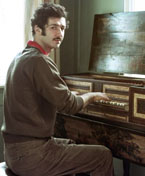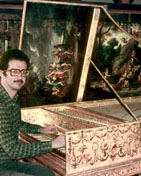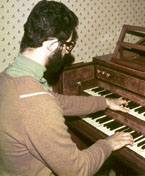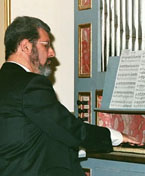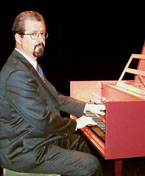Published Book Review
Find below excerpts from a thorough and highly positive review written by a distinguised British harpsichordist. This review contains some observations that the author of the book has addressed in a letter published in the same magazine, No.50, June 2011. In the text below a few clarifications —not in the original review—have been inserted between curly brackets { }.
Penelope Cave in The British Clavichord Society Newsletter, No.49, Feb.2011:
“Playing the Baroque Harpsichord is a mighty title, encompassing (if it were merely confined to the historical Baroque, c.1600—1750, which it is not) one hundred and fifty years of instrument making and a panoply of composers and theorists. It is a brave man who takes on these revered, controversial and puzzling historic figures, who have been interpreted and translated through the lens of each age including our own, and probably as often misunderstood. ... Dr Claudio Di Veroli ... , a statistician, ... also found time to give concerts on both harpsichord and organ and to publish two well-received books on unequal temperaments and early fingering, so he confidently embarks on this project with the same logical, scientific approach, in order to extract proof and results. He generously shares his ideas on speed, use of manuals, choice of stops and ... inégalité ... with illustrations, tables and coloured text boxes. His main interest is, indeed, in the ‘High Baroque’ of Bach, Couperin and Rameau, and he refers to both contemporary theorists and twentieth-century writers on Baroque practice. ...
There are eight chapters, each sub-divided into sections; thus the first chapter, ‘Instruments and Actions’, consists of sections on the harpsichord family, how to choose between historical models, keyboard ranges, the jack, a section entitled ‘inexpressive keyboard’, and one on tuning and maintenance. His discussion of keyboard ranges, split keys and jacks is useful, and he demonstrates his theory of eleven stages of jack-action in a clear, coloured diagram, along with two more to explain string and jack alignment.
Chapter 2, on finger mechanics and articulation ... Di Veroli has the gift of making you think ... His decided opinions on joining and detaching of notes, and his interpretations of what he calls the ‘ancients’ doings and documentation will certainly promote thought about the proportions of sound to silence within note-lengths, and possibly some healthy discussion.
In Chapter 3, on ornamentation, Di Veroli offers, in his own words, a ‘comprehensive but succinct’ guide. ... useful comments that follow his ‘Table of Baroque Essential Ornaments’. ... There is a good section on Italianate embellishment and {in Chapter 4} a long one on French inégalité ... Di Veroli is aware that ‘only experience—under a good guide—will show what to do, and ’ ... he rightly says ‘the modern musician often needs years of study to incorporate inégales in a musically-satisfying way.’
The section on Bach’s use of triplets and sesquialter notation offers us more food for thought. I would say that Bach’s use of inégalité is well-covered elsewhere ..., but Di Veroli gives suggestions as to where and when it should be used in Bach’s keyboard works. ...
{In Chapter 5 on tempi} Di Veroli’s theory that slower tempi are desirable because ‘it is well documented that Baroque musicians rehearsed pretty little, if at all’, is one to enjoy. He gives some metronome speeds for Bach’s concertos and the Goldberg Variations, Scarlatti sonatas, and Daquin’s four suites.
{Chapter 6 on harpsichord Voicing, like} Chapter 7, on harpsichord registration, is not for clavichord players {readers of the British Clavichord Society Newsletter}.
Chapter 8 ... deals with repertoire issues. Di Veroli ... airs the arguments against the clavichord being of particular interest to J. S. Bach. He admits that, for many players, all Bach’s keyboard works that are not specifically harpsichord pieces were conceived for the clavichord, and discusses why the kleine Präludien für Anfanger might have been intended for that instrument. He maintains, however, that most of the pieces in Book I of The Well Tempered Clavier are harpsichord music only, since most would be impossible on the common triple-fretted clavichords of the time. Of Book II, he says ‘unfretted clavichords were now fast becoming fashionable in German-speaking countries. The author finds that most pieces in the WTC II are compatible for any stringed keyboard ... [and his exceptions follow].’ His statistical argument against the well-known Organ Toccata and Fugue in D minor (BWV 565) being by Bach is a tour de force ... To finish the last chapter, he makes a list of Haydn's sonatas and suggests suitable keyboards: this is not a new idea, but it is usefully constructed ...
There are six appendices, all thoroughly practical. Among them is a multilingual dictionary, giving equivalent terms for wood types in six languages and parts of instruments and maintenance terms in five; a glossary giving definitions of each of these terms in English; an essay on logical methods ....”
